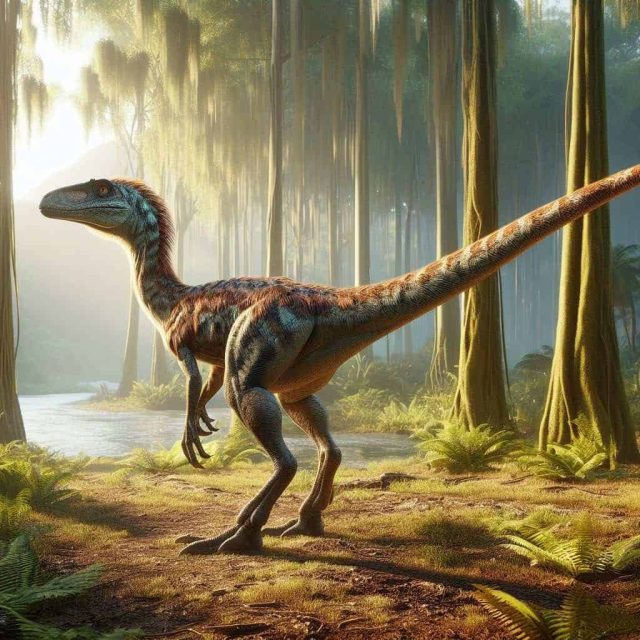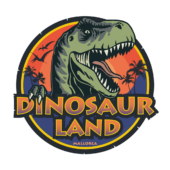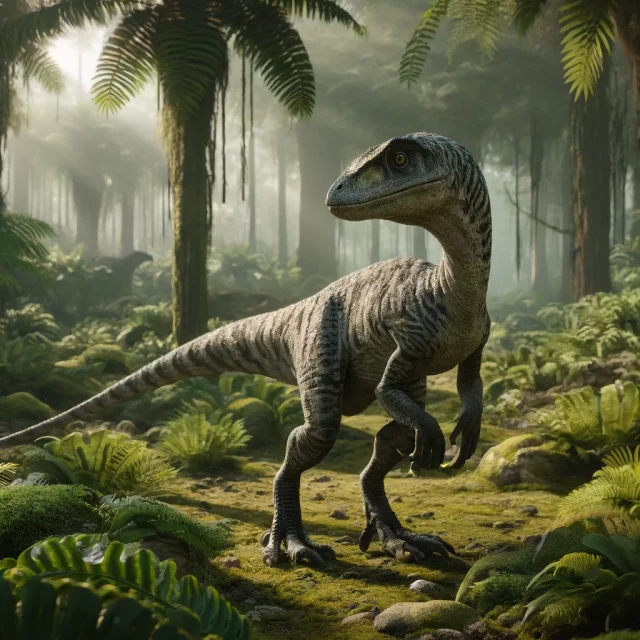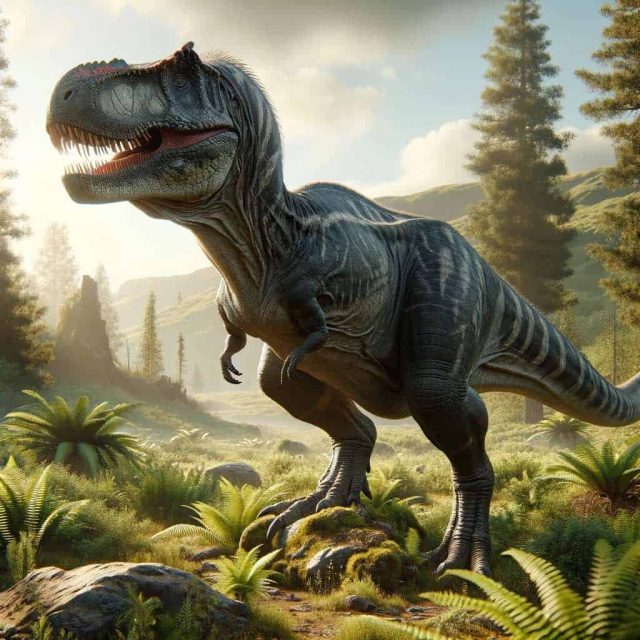Its name means fast thief. The Velociraptor was smaller than its representation in popular culture, but it was still a fearsome and swift hunter. The typical protuberances of the insertion of feathers present in the bones of the arm confirm that it had them. It was probably warm-blooded, and had soft fur to retain heat and provide energy for hunting.

Velociraptor
Family
Theropods
Era
Upper Cretaceous, 75 million years ago
Where he lived?
Mongolia
Weight
45Kg
Height
0,5m
Length
2m
Learn More About the Velociraptor: The Speedy Thief of the Cretaceous
The Velociraptor is undoubtedly one of the most iconic and fascinating dinosaurs, capturing the imagination of both scientists and the general public. Although it is often depicted as being considerable in size in popular culture, the reality is that this agile predator was smaller, similar in size to a large dog or a turkey. However, its stature did not diminish its reputation as one of the most cunning and fastest hunters of its time.
A Feathered and Swift Creature
Contrary to typical images in movies and books, the Velociraptor had feathers, a discovery supported by the protuberances on the arm bones that served for the insertion of the feathers. These feathers not only provided thermal insulation but could also have helped in displays during courtship or even in maneuvering during the hunt. Additionally, it is considered to have been warm-blooded, which allowed it to maintain a high level of activity, necessary for pursuing prey and surviving in the varied and sometimes harsh climates of its environment.
A Revealing Find in the Gobi Desert
Discovered in the 1920s in the Gobi Desert, the Velociraptor has become one of the most well-known and studied dromaeosaurids. Its detailed anatomy has been revealed through numerous fossils, including an extraordinary specimen preserved in combat with a Protoceratops. These and other findings have allowed paleontologists to better understand its lifestyle and hunting abilities.
Anatomy of a Perfect Hunter
The Velociraptor was equipped with a long claw on the second toe of its foot, which it probably used as its main weapon to stab and hold its prey. Additionally, its tail was quite stiff, providing stability and balance during the run or when making rapid changes in direction. These features, combined with its manageable size, measuring approximately 2 meters in length and reaching a height of up to 0.5 meters at the hip, made it a formidable predator in its habitat.
Curiosities of the Velociraptor
The Velociraptor lived in what is now Central Asia, a region that offered diverse ecosystems, from arid deserts to lush forests, demonstrating its adaptability. This carnivorous dinosaur fed on a variety of small animals, possibly including insects, small dinosaurs, and reptiles. Images of Velociraptor with feathers have changed the way we visualize these fascinating prehistoric animals, adding a new dimension to our understanding of their evolution and appearance.
A Perpetual Icon
The Velociraptor is not only a testament to the diversity and adaptability of carnivorous dinosaurs but also continues to be a subject of constant study and interest in paleontology. From fossil discoveries to depictions in popular culture, the Velociraptor remains one of the most emblematic dinosaurs, offering ongoing insights into life in the Cretaceous.
At Dinosaurland, we explore the history and science behind these incredible creatures, allowing our visitors to learn more about the world in which these fascinating predators lived. We invite you to dive into the prehistoric past and learn more about the Velociraptor and many other dinosaurs in our theme park. Come and discover the true image of these extraordinary animals in an educational experience that will transport you millions of years back in time!

see more dinosaurs
plan your visit









